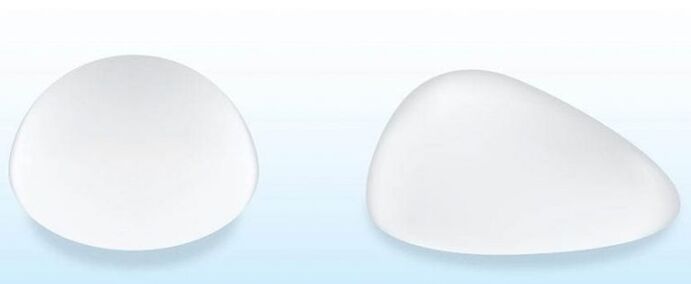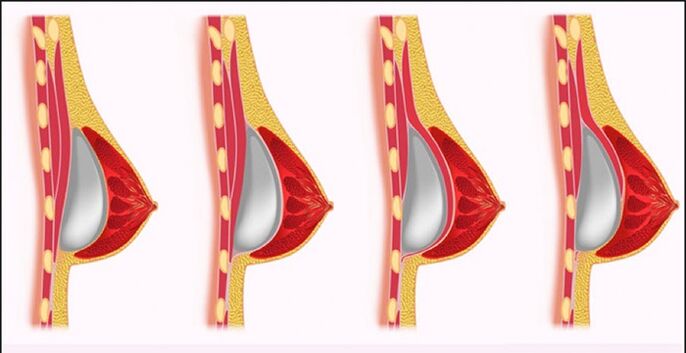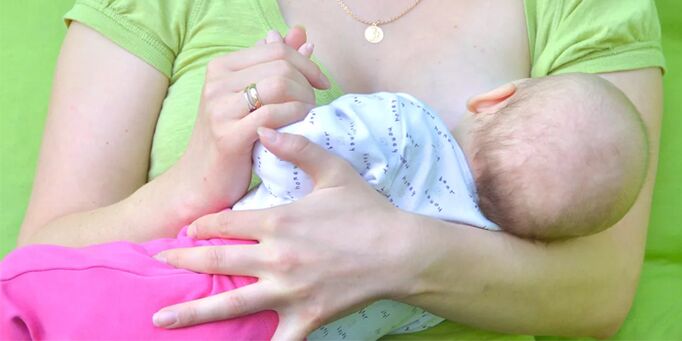Shape correction, breast augmentation is one of the most popular plastic surgeries. With the help of mammoplasty, you can correct congenital or acquired breast defects, restore its volume and flexibility after childbirth and breastfeeding. Properly performed surgery helps a woman become more attractive and confident.
Indications for surgery
- Sinking and loss of elasticity of the mammary glands (mastoptosis).
- Increased breast tooth while maintaining tone and position (macropathy).
- Reduction of mammary glands after lactation.
- Small breast size (micromastia).
- Enlarged breast volume in men (gynecomastia).
Types of mammoplasty
- Increasing mammoplasty(endoprosthetics) - breast augmentation, shape correction with the help of implants. It is used after childbirth, breastfeeding, with congenital asymmetry.
- Reducing mammoplasty- Reduction of bust size by mastoptosis or macropathy.
- Mastopexy- breast lift. It is indicated for mastoptosis if the breast volume meets the requirements of surgery.
Endoprosthesis of the mammary glands
During the operation, silicone prostheses (implants) are inserted into the mammary glands. The choice of the site of incision is consistent with the woman. The implant should be placed under the pectoralis muscle and, if the volume of the breast allows, between the muscle and the mammary gland. The incision is sewn, no drainage is required. The nipple and her are enlarged after surgery.
Breast implants
Silicone or polyurethane endoprostheses correct the volume and shape of the chest and create a feeling of natural body tissue.
Implants have a lifespan of more than 15 years, after which it is recommended to replace them.

The products differ in a number of indicators:
- Fillers: cohesive gels or saline (sodium chloride). The composition of the gels is more flexible, homogeneous, light, but dangerous to the body if leaked. Brine is safer, softer, cheaper. Negative properties - gurgles during movement, prone to leakage.
- Structure: rough (textured) or smooth. Textured implants are more stable, but skin tissues can appear due to friction of body tissues to their surface. The disadvantage of smooth dentures is the probability of displacement.
- Shape: anatomical or round. The former have a more natural appearance, while the latter retain the symmetry and shape of the breast even when displaced.
Reducing mammoplasty
In this type of surgery, adipose tissue and breast tissue are partially removed, their size changes, and they take on a new shape.
Excision of excess tissue reduces the likelihood of cancer.
Options for reducing mammoplasty:
- Liposuction. The method is considered conservative and leaves no seams. It is designed for mild breast reduction, mild mastoptosis.
- Short (vertical) seam. It is a popular method in which the breasts retain their natural shape and the nipples are sensitive. Surgery takes little time and the rate of complications is low.
- T-shaped (anchor) cut. The classic method used to remove large amounts of tissue. Disadvantages of healing time, big scar.
- Amputation with nipple transfer. It is used for very large breasts. The method is associated with a high risk of mammary gland injury, loss of nipple sensitivity, and inability to breastfeed.
Mastopexy
Lifting without an implant is possible in several ways:
- The vertical is used for 1-2 degree mastoptosis, the seams are almost invisible, the cosmetic effect is lasting. The method is ineffective for lowering the breast 3-4 degrees.
- Anchor mastopexy gives good results for ptosis of any complexity. Disadvantages include a longer recovery period, noticeable stitches, and an increased risk of breast tissue damage.
- Periareolar mastopexy is the removal of a small piece of skin around the arena. It is indicated for pseudoptosis and is ineffective for other forms of bust sagging.
Operational phases
For excellent results in plastic surgery, quality medical care at all three stages is important. The preparation period lasts 1-2 weeks. The actual surgery takes 1-4 hours.
Complete recovery occurs within 1, 5 months.
Preparing for mammoplasty

The operation should be performed at the earliest one year after the end of lactation. Hormonal contraceptives, aspirin and salicylate preparations should not be used for 2 weeks before surgery.
You need to stop drinking alcohol, smoking.
During the preparation, research is necessarily carried out:
- general and biochemical blood tests;
- electrocardiogram;
- blood test for anticoagulants (coagulogram);
- Ultrasound of the mammary glands;
- general urine test
- testing for hepatitis and HIV viruses.
The course of the surgical procedure

Breast augmentation is performed under general anesthesia. A special type is expander dermotension. It is used to increase breast volume due to the lack of its own tissue and large implants. The procedure is performed in 2 stages. First, an dilator is installed to gradually stretch the breast tissue for 1, 5 to 2 months.
When the desired size is reached, an endoprosthesis is placed in the breast.
Incision methods:
- Through the fold below the breast (submammal access). A safe way to increase mammoplasty. The scar of the 4-5 cm long incision disappears over time under a slightly lowered breast. It is difficult to access in thin girls with micromastia.
- Cut around or along the lower arch of the arena (periareolar approach). Advantage - surgical scars are almost invisible. In patients planning to breast-feed, this method is not recommended due to the high risk of breast injury.
- Endoscopic augmentation through the axillary approach. State-of-the-art equipment helps to insert the implant without damaging blood vessels and nerve fibers. An incision 3-4 cm long is made in the armpit zone and then the scar is naturally covered. The volume of the implant is limited - up to 400 ml.
- Endoscopic access through the umbilicus. This method is rarely used because the point of entry is far from the site of surgery and there are difficulties in designing a "pocket" for the prosthesis.
Rehabilitation after mammoplasty

If the surgery took place without complications, the patient spends up to 3 days in the hospital. Bandages should be used after discharge. Moderate pain in the first few days is considered natural in the intervention area. Feeling of skin tightness is possible due to postoperative edema, which resolves after about 5-7 days.
After 4-6 weeks, the breast sags slightly, appears more natural, and capsules form around the implants.
Successful recovery rules:
- Do not load the shoulder strap or lift weights.
- Do not visit fitness clubs, swimming pools, saunas, spas.
- Sleep on your back.
- Don't put your hands up.
- Be sure to wear a compression garment after breast augmentation.
Possible complications
- Capsular contracture. The body forms a shell around the endoprosthesis, which can lead to displacement, violation of the symmetry of the mammary glands, and hardening.
- Infection. Infection occurs during the operation due to violation of asepsis rules or non-compliance with antiseptic care guidelines. The duration of the special risk is 1 week after surgery.
- Keloid, hypertrophic scars. They appear when the body is prone to form. The formations appear as dense ridges that rise above the surface of the skin and impair the appearance of the breast.
- Accumulation of blood, serum fluid (hematoma, seroma) and consequent darkening of the skin. This occurs when the blood vessels and lymphatics are damaged during surgery or during the recovery period. Complications appear due to low blood clotting, sharp rise in blood pressure, improperly sized endoprosthesis.
- Reduction or loss of sensitivity of nipples, arolas. It often occurs when large breasts are reduced with mammoplasty due to nerve damage.
- Tear of the implant. It occurs because of the thin shell that is often found in cheap prostheses. The salt filler is easily absorbed by the body without causing harm. Damage to the endoprosthesis with a cohesive gel is not always noticeable, but is dangerous if the silicone gets into the body tissues.
Breastfeeding after surgery

The safest operation is an incision made in the armpit (transaxillary) or under the breast (submammary).
Breastfeeding is allowed about a year after surgery.
Breast-feeding problems can occur in the following cases:
- The endoprosthesis is placed to compress the mammary glands, reducing the amount of milk they produce.
- Cutting along the arula is more likely to damage the nerve endings around the nipple.
- Reducing plastic, which is associated with a reduction in breast size, disrupts the milk ducts, blocking their functions.
In what cases is breast augmentation contraindicated?
- Cardiovascular diseases, varicose veins (thrombophlebitis, thrombosis).
- Severe forms of mastopathy.
- Oncology.
- Blood clotting disorders, diabetes.
- Infectious diseases (ARVI, influenza).
- Neurological, mental disorders.
- Pregnancy, breast-feeding.
- Age under 18 years.
Advantages and disadvantages of mammoplasty

Advantages of plastic breast correction:
- Application of modern interventions.
- Correction of congenital and acquired defects of the mammary glands.
- Long-lasting and pronounced aesthetic effect.
- Short periods of operation.
- The choice of the shape and material of the endoprostheses as desired.
- Preservation of lactation.
Possible disadvantages include:
- Skin traces from incisions - stitches, scars (unless special absorbent materials have been used).
- Risk of complications (infection, breast deformity, bleeding).
- The need to replace endoprostheses every 10-15 years.
- The high cost of mammoplasty.
- The need for general anesthesia.
- Painful feelings in the first postoperative days.
- The need to wear compression underwear at all times.
- Long rehabilitation period (from several months to a year) with denial of sports, physical activity, pregnancy and breastfeeding.


























